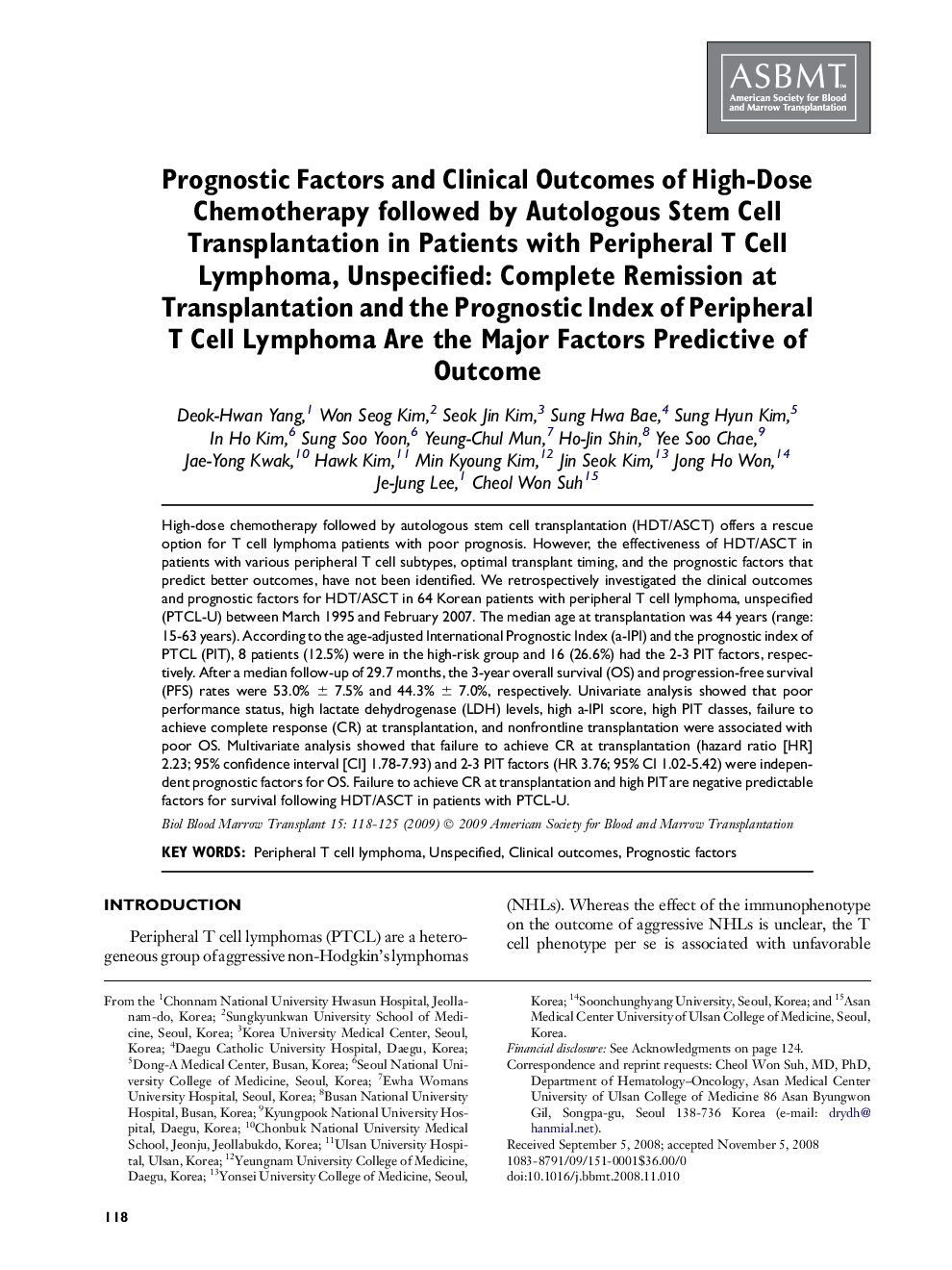| Article ID | Journal | Published Year | Pages | File Type |
|---|---|---|---|---|
| 2105735 | Biology of Blood and Marrow Transplantation | 2009 | 8 Pages |
High-dose chemotherapy followed by autologous stem cell transplantation (HDT/ASCT) offers a rescue option for T cell lymphoma patients with poor prognosis. However, the effectiveness of HDT/ASCT in patients with various peripheral T cell subtypes, optimal transplant timing, and the prognostic factors that predict better outcomes, have not been identified. We retrospectively investigated the clinical outcomes and prognostic factors for HDT/ASCT in 64 Korean patients with peripheral T cell lymphoma, unspecified (PTCL-U) between March 1995 and February 2007. The median age at transplantation was 44 years (range: 15-63 years). According to the age-adjusted International Prognostic Index (a-IPI) and the prognostic index of PTCL (PIT), 8 patients (12.5%) were in the high-risk group and 16 (26.6%) had the 2-3 PIT factors, respectively. After a median follow-up of 29.7 months, the 3-year overall survival (OS) and progression-free survival (PFS) rates were 53.0% ± 7.5% and 44.3% ± 7.0%, respectively. Univariate analysis showed that poor performance status, high lactate dehydrogenase (LDH) levels, high a-IPI score, high PIT classes, failure to achieve complete response (CR) at transplantation, and nonfrontline transplantation were associated with poor OS. Multivariate analysis showed that failure to achieve CR at transplantation (hazard ratio [HR] 2.23; 95% confidence interval [CI] 1.78-7.93) and 2-3 PIT factors (HR 3.76; 95% CI 1.02-5.42) were independent prognostic factors for OS. Failure to achieve CR at transplantation and high PIT are negative predictable factors for survival following HDT/ASCT in patients with PTCL-U.
